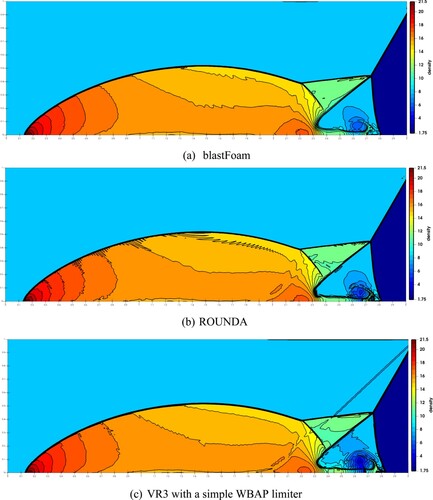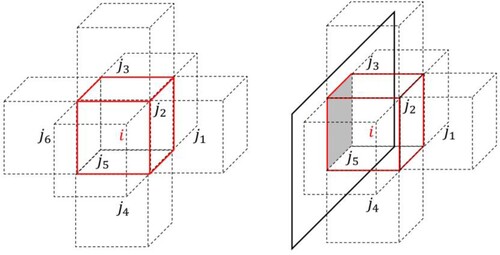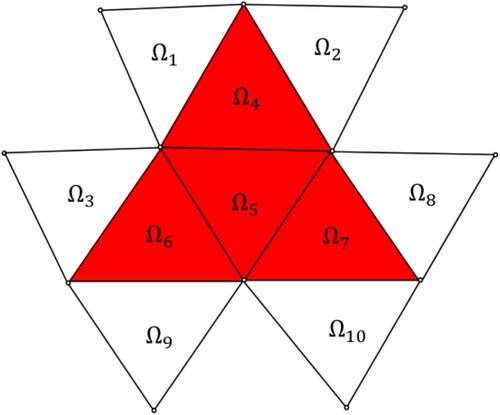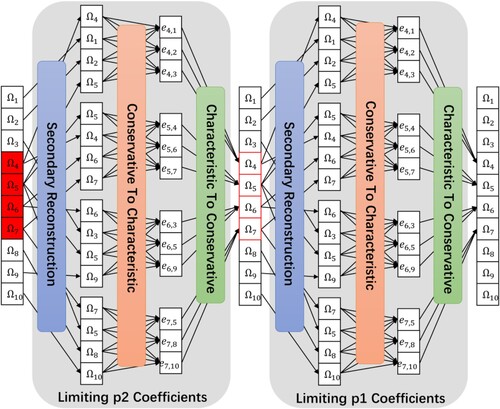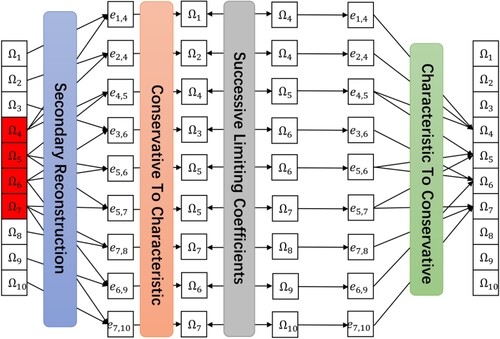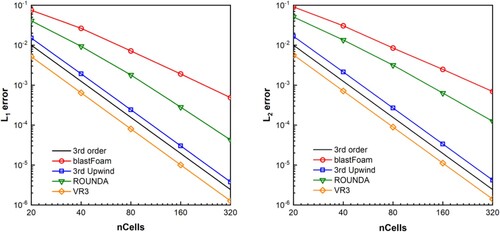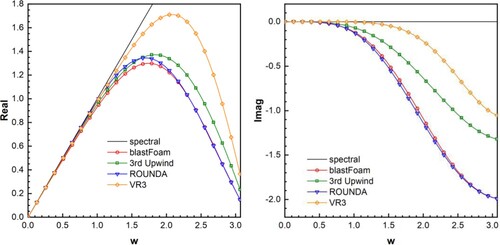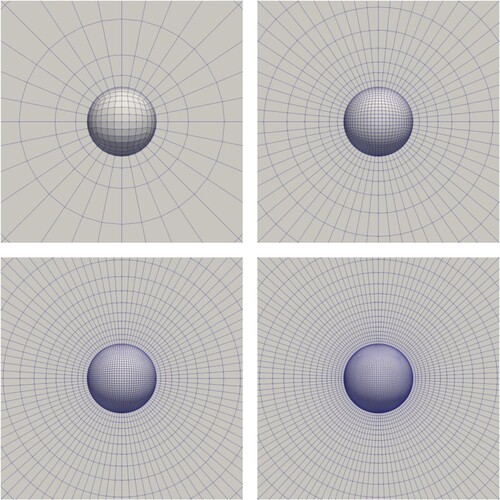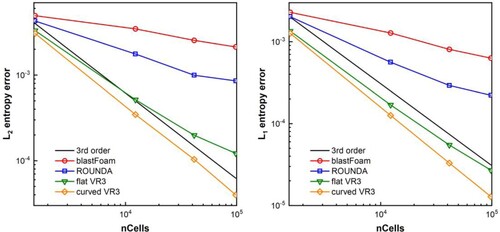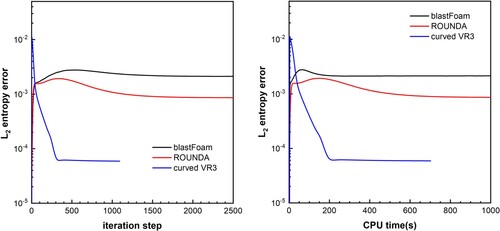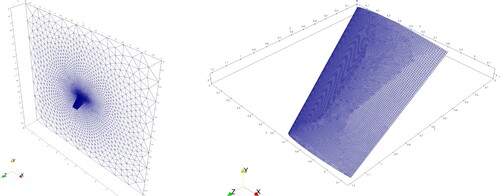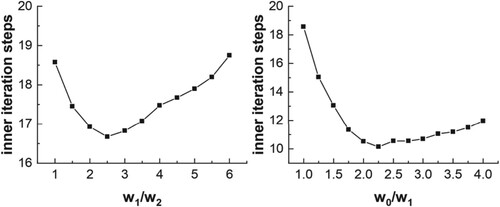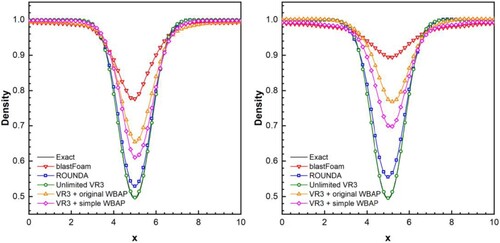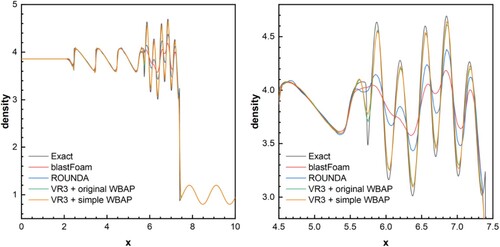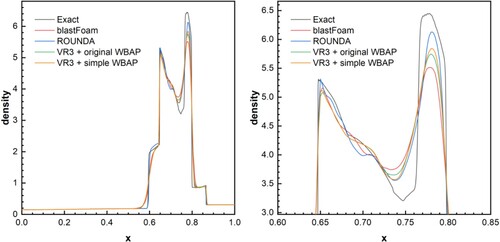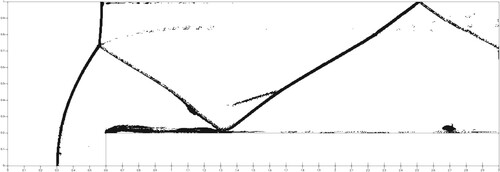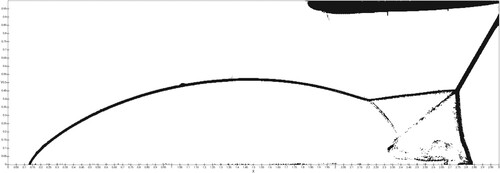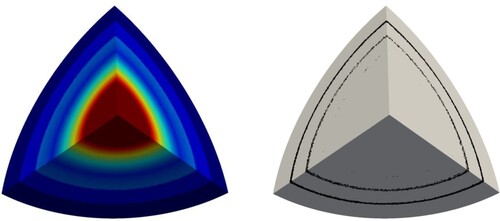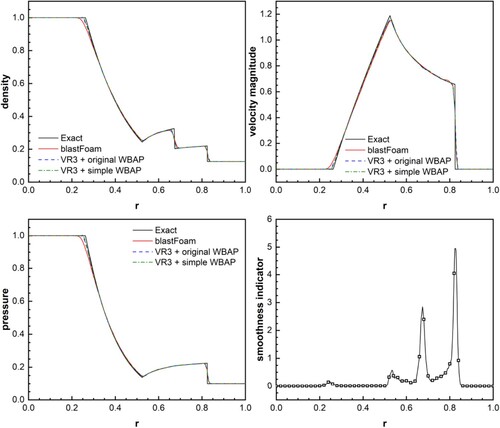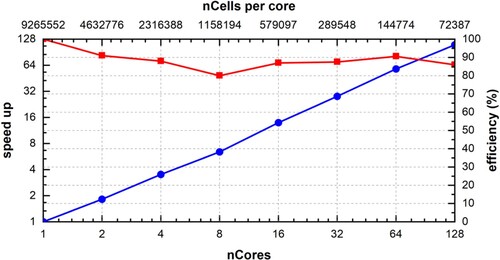Figures & data
Figure 2. A curved triangle boundary face (left) and vertex normal vectors around sharp geometry (right).

Table
Table
Table
Table 1. Information of solvers for numerical tests.
Figure 9. Subsonic flow past a sphere. Computed 31 equally spaced Mach number contours from 0.019 to 0.589 by the three solvers on 32 × 32 × 96 mesh.
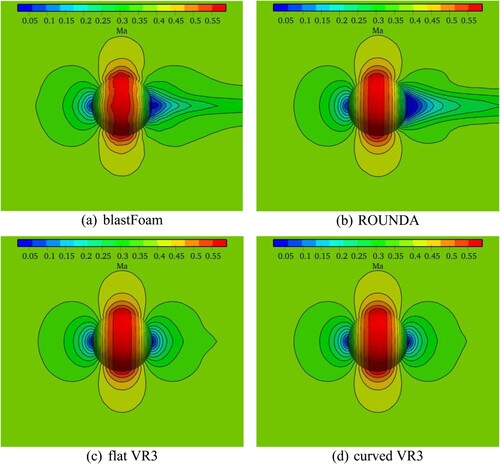
Figure 13. Transonic flows past a ONERA M6 wing. Computed pressure coefficient contours from −1.1 to 1.4.
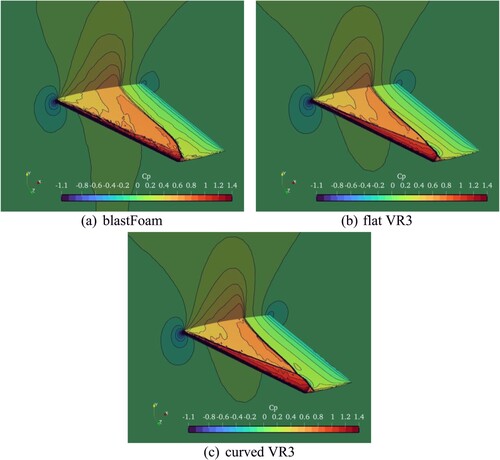
Figure 14. Comparison of experiment and computed surface pressure coefficient of the three methods at different semi-span locations.

Table 2. Errors and convergence rates for the isentropic vortex problem on four types of meshes.
Table 3. Comparison of average inner iteration steps of the original weights and the optimized weights in the four types of meshes.
Table 4. Comparison of wall-clock time for different limiters for the smooth isentropic vortex problem on a regular hexahedral mesh at h = 1/8 after 10 time periods.
Table 5. Two shock tube cases.
Figure 22. Mach 3 wind tunnel with a step. Thirty equally spaced density contour lines from ρ = 0.3 to 6.15.
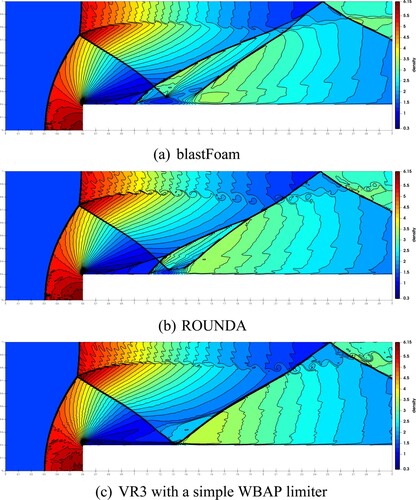
Figure 24. Double Mach reflection. Thirty equally spaced density contour lines from ρ = 1.75 to 21.5.
